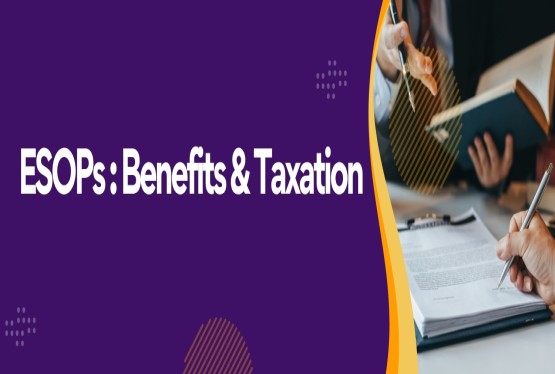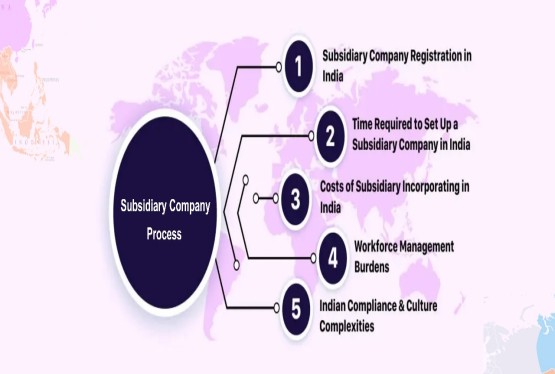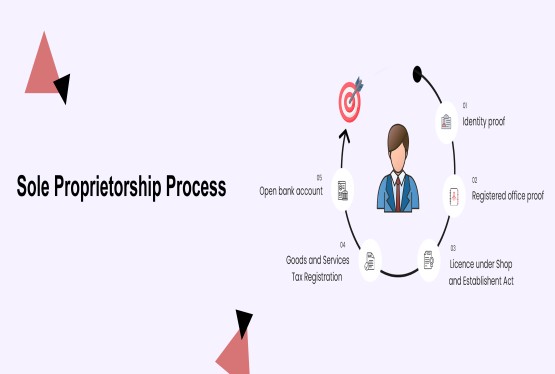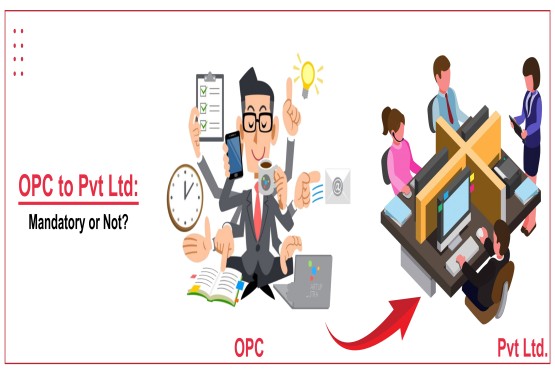In India, selecting the appropriate business structure is important to figuring out a company's tax obligations, regulatory compliance, and operational flexibility. The Limited Liability Partnership (LLP), which is governed by the LLP Act, 2008, has become popular among the available choices because it provides a hybrid framework that combines the advantages of limited liability with the adaptability of a partnership. An LLP is considered a distinct legal person with the capacity to own property, enter into contracts, and bring or defend lawsuits in its own name, as well as continuous succession. The Income-tax Act, 1961, which treats LLPs as partnership companies rather than companies, is what makes them so appealing in terms of taxation.
As a result, LLPs in India are eligible for a number of tax benefits, such as a flat income tax rate of 30%, exemptions from the Dividend Distribution Tax (DDT) and Minimum Alternate Tax (MAT), and deductions for partner pay and interest, albeit subject to statutory restrictions. Additionally, Section 10(2A) protects the profits that partners share among themselves from taxes, thereby guaranteeing that there is only one layer of taxation at the LLP level. Aside from these financial advantages, LLPs also benefit from simpler compliance, with fewer legislative responsibilities than private limited companies, such as reduced audit standards and exemption from annual general meetings. Due to these legal and tax efficiencies, LLPs are a popular option for entrepreneurs, professionals, and SMEs in India looking for both regulatory flexibility and tax benefits.
What is an LLP?
A Limited Liability Partnership (LLP) is a business structure registered under the Limited Liability Partnership Act, 2008, that combines the limited liability protection of a company with the operational flexibility of a traditional partnership firm. In India, an LLP is recognized as a separate legal entity, meaning it can own property, enter into contracts, and sue or be sued in its own name. It also enjoys perpetual succession, ensuring the business continues even if partners change due to retirement, resignation, or death.
As per Section 3 of the LLP Act, 2008, an LLP is a body corporate formed and incorporated under this Act and is a legal entity separate from its partners. It has perpetual succession, and any change in the partners of an LLP does not affect the existence, rights, or liabilities of the LLP.
This definition highlights that an LLP enjoys a distinct legal personality, capable of entering into contracts, owning assets, suing or being sued in its own name making it more structured than a general partnership.
LLP vs Partnership firm vs Private Ltd Company
|
Particulars |
LLP |
Partnership Firm |
Private Limited Company |
|
Governing Law |
LLP act, 2008 |
Indian Partnership Act,1932 |
Companies Act,2013 |
|
Legal Status |
Sperate Legal entity |
No separate legal entity |
Separate legal entity |
|
Liability of partners/shareholders |
Limited |
Unlimited |
Limited to share held |
|
Income Tax Rate |
30%+ Surcharge +cess |
30%+surcharge +cess |
22%(Normal Co.),15%(New Mfg Co.)+ Surcharge +cess |
|
Dividend Distribution Tax (DDT) |
Not applicable |
Not applicable |
Not applicable (post 2020- dividend taxable in hands of the shareholders) |
|
Deemed Dividend (sec 2(22)(e) |
Not applicable |
Not applicable |
Applicable |
|
Tax on profit sharing |
Exempt in hands of partners |
Exempt in hands of partners |
Taxable as dividend income |
|
AudiT requirement |
If turnover > Rs 1 crore(or Rs 10 cr with conditions) |
Same as LLP |
Mandatory regardless of turnover |
|
Return Filling |
ITR-5 |
ITR-5 |
ITR-6 |
|
Annual ROC filling |
Form 11 and Form 8 |
NA |
AOC-4,MGT-7, MGT 7A |
Taxation of LLP v/s Income Tax
Business owners must understand how the Income Tax Act of 1961 taxes a Limited Liability Partnership (LLP) in order to assess the most tax-efficient structure. The income tax legislation that governs LLPs is the same as that which applies to other organizations, but the application of the tax regulations to LLPs is unique and provides a number of benefits over individuals and corporations.
The Tax Rate for LLPs
The Income Tax Act mandates a 30% flat tax rate on all of an LLP's revenue. Additionally, there are health and education cess taxes (now 4%) and any applicable surcharges. LLPs are taxed at a consistent rate regardless of income level, in contrast to people who are taxed using progressive income slabs.
Alternative Minimum Tax (AMT)
for Limited Liability Partnerships (LLPs) Section 115JC of the Income Tax Act subjects LLPs to the Alternate Minimum Tax (AMT). If an LLP claims certain profit-related deductions under Sections 10AA or 80-IA through 80RRB, it must pay AMT at a rate of 18.5% of its adjusted total income, plus any applicable Surcharge and Cess. Even though LLPs are excluded from the MAT (Minimum Alternative Tax) requirement that applies to businesses, this operates in a manner that is analogous to the MAT.
Profit Distribution Tax Treatment
The fact that the profit shared among partners after tax is not taxable in their hands is one of the most appealing aspects of LLP taxation. Since LLPs do not have the idea of a dividend, there is no dividend tax or double taxation. In contrast, corporations are taxed on their earnings, and shareholders are subject to additional taxation on any dividends they get.
Interest and wages paid to the partner may be deductible
Under Section 40(b) of the Income Tax Act, wages and interest paid by LLPs to their partners may be deducted as an expense. These payments, however, are subject to restrictions set forth by the law and must be permitted by the LLP agreement. This provides a legitimate means of tax savings by lowering the LLP's total taxable income.
No Deemed Dividend Clauses
The Income Tax Act's Section 2(22)(e), which deals with deemed dividends (such as loans made to shareholders that are considered dividends), does not apply to LLPs. When compared to private limited companies, where similar transactions might have tax implications, this is another tax benefit for LLPs.
Tax Return Filing Procedures
Income tax returns must be submitted by LLPs using Form ITR-5. Tax audit under Section 44AB becomes mandatory if the total turnover of an LLP exceeds Rs.1 crore, or Rs.10 crore if digital transactions account for 95% or more of the total. In contrast, businesses are subject to mandatory audits regardless of revenue, which simplifies LLP compliance in this area.
There is no dividend distribution tax (DDT)
LLPs are not subject to pay any dividend distribution tax, unlike businesses that were formerly subject to it (the tax has now been abolished and replaced by a tax on shareholders' hands). Beyond the LLP's income tax, earnings may be distributed to partners without incurring any additional tax obligations.
Different from the regulations of the General Income Tax
Although the Income Tax Act covers LLPs, their treatment is very different from that of people and corporations. LLPs provide a hybrid balance between partnership tax flexibility and business benefits, while people are taxed on slabs and corporations are subject to dividend-related taxes and regulations.
Tax benefits of LLP in India for Business startup
The Limited Liability Partnership (LLP) structure has become a popular choice for startups and small businesses in India due to its tax efficiency, operational flexibility, and limited compliance burden. Governed by the Income Tax Act, 1961, LLPs enjoy several tax benefits that make them an ideal option for entrepreneurs seeking cost-effective and compliant growth.
No Dividend Distribution Tax (DDT)
Unlike private limited companies, LLPs are not required to pay Dividend Distribution Tax on profit sharing. This means that once the LLP pays tax on its income, it can distribute the remaining profit to its partners without any additional tax liability. This leads to single-layer taxation and avoids double taxation on profits.
Profit Sharing is Tax-Free in the Hands of Partners
In an LLP, the share of profit received by partners is fully exempt from tax in their individual hands under the Income Tax Act. This is a major tax advantage over companies, where dividends are taxed in the hands of shareholders post-2020.
Deduction for Remuneration and Interest to Partners
Remuneration and interest paid to working partners are allowed as deductible business expenses under Section 40(b) of the Income Tax Act. This helps in reducing the taxable income of the LLP and, consequently, the overall tax liability.
No Deemed Dividend Provisions
LLPs are not subject to the deemed dividend provisions under Section 2(22)(e) of the Income Tax Act. This allows for greater flexibility in distributing or withdrawing funds from the LLP without triggering additional tax consequences.
Lower Effective Tax Burden
Though LLPs are taxed at a flat 30%, they enjoy deductions (like partner remuneration and interest), and avoid dividend-related taxes, making the effective tax outflow lower compared to companies, especially for small-to-medium-sized businesses.
Fewer Compliance Requirements
Compared to Companies, LLPs are not required to comply with several corporate tax provisions applicable to companies, such as MAT (Minimum Alternate Tax under Section 115JB), and their audit is only required when turnover exceeds Rs.1 crore (or Rs.10 crore in case of digital transactions). This reduces indirect compliance costs and penalties.
Eligibility for Carry Forward and Set-off of Losses
Like other business entities, LLPs are also eligible to carry forward business losses and set them off against future profits for up to 8 assessment years, provided return is filed within due dates. This helps in optimizing tax planning during the initial growth phase
Access to Standard Business Deductions
LLPs are entitled to claim all the regular business-related tax deductions under the Income Tax Act, such as depreciation, rent, employee salaries, office expenses, and more. This allows startups to minimize their tax burden while reinvesting more into their operations.
Simplified Tax Filing Process
LLPs are required to file income tax returns using Form ITR-5, which is simpler than ITR-6 applicable to companies. Also, since LLPs do not have share capital or dividend compliance, their tax filing and documentation is comparatively hassle-free.
Tax-Efficient for Professional and Consulting Firms
For startups in sectors like law, accounting, IT services, design, and consulting, LLPs provide a tax-efficient way to organize and grow the business while distributing profits to partners without triggering dividend taxation.
Section 40(B) Deduction for Interest and remuneration paid to partner in LLP
Limited Liability Partnerships (LLPs) are permitted under Section 40(b) of the Income Tax Act, 1961, to deduct two main categories of payments made to partners:
-
Capital brought in by partners, plus interest on it, and
-
Payment for laboring partners.
These deductions are an mportant tax planning instrument because they lower the LLP's taxable income. Nevertheless, in order to claim them legally, they are bound by stringent rules and legal restrictions.
Interest deduction on capital
The LLP is permitted to deduct interest paid to its members on their capital contribution at a rate of no more than 12% annually. Prerequisites: The payment of interest on capital must be expressly permitted by the terms of the LLP agreement. The interest rate should never be more than 12% annually, even if the LLP agreement permits a higher rate. Interest may be deducted only if it is really paid or due during the fiscal year.
Remuneration for working partners can be deducted
Remuneration, such as a salary, bonus, commission, or other payment, can be made to working partners in an LLP, but only within the permitted limits and in accordance with Section 40(b).
Conditions
Only active business partners are eligible for compensation. The LLP agreement should grant permission for the payment. Its quantity and method of calculation must adhere to the terms of the agreement and be connected to a particular time frame. It must be actually paid or incurred during the accounting year. Highest Allowable Deduction Limit for Pay.
The highest amount of deductible compensation is determined by the LLP's book profit for the year, which is computed as follows:
On the first Rs.3,00,000 of book income, or if there is a loss: Whichever is greater: 90% of the book profit or Rs.1,50,000 With a net book profit of more than Rs.3,00,000: sixty percent of the remaining book earnings
Formula: Assuming that the book profit equals Rs.X, then The Highest Permissible Payment = 90% of the amount of Rs.3,00,000 or Rs.1,50,000, whichever is greater + (Rs.X - Rs.3,00,000) multiplied by 60%
Compliance Benefits of LLP that lead to lower tax liability
One of the key benefits of establishing a Limited Liability Partnership (LLP) in India is its decreased compliance burden, which either directly or indirectly helps to lower total tax liabilities. In contrast to corporations, LLPs are subject to the LLP Act of 2008 and are treated for income tax purposes like conventional partnerships, which leads to less stringent tax compliance and fewer penalties for non-compliance.
-
Audit Exemption Due to Turnover Thresholds: An LLP must have its accounts audited only when its yearly turnover surpasses Rs.1 crore (or Rs.10 crore if it meets the requirement of a minimum of 95% digital transactions). This is in contrast to private limited companies, which are required to undergo a statutory audit as mandated by the Companies Act, regardless of their turnover. Result: By avoiding audit costs, LLPs can lower their expenses and prevent penalties associated with audit delays.
-
Simpler Tax Return Filing: LLPs file their income tax returns using Form ITR-5, which is less complex compared to ITR-6 (used by companies). LLPs are also not required to compute book profits under Section 115JB (MAT), thereby reducing compliance calculations. Result: Ease in return preparation leads to fewer errors, reduced professional fees, and timely filing—all of which help avoid interest and late fee penalties under Sections 234A, 234B, and 234F.
-
No Need for Dividend Compliance: LLPs are not required to comply with dividend-related filings, board resolutions, or withholding tax requirements applicable to companies. Since profits are shared directly with partners (not as dividends), LLPs avoid: Dividend withholding tax compliance Board/AGM formalities, Payment of dividend tax Result: Less procedural burden reduces cost and eliminates risk of non-compliance penalties.
-
No Requirement to Maintain Complex Statutory Registers: Unlike companies, LLPs are not required to maintain share registers, minutes books, or statutory forms for capital structure changes. The compliance under LLP is limited to: Filing Form 8 (Statement of Account & Solvency) Filing Form 11 (Annual Return) Result: Reduced documentation = lower legal fees, lower compliance overheads, and fewer chances of tax scrutiny due to mismatch in records.
-
Lower Risk of Deemed Taxable Transactions: LLPs are not subject to certain corporate tax provisions such as: Deemed dividend under Section 2(22)(e) Dividend Distribution Tax (DDT) (now replaced by tax in shareholders’ hands) MAT under Section 115JB
Result: Avoiding these provisions reduces the risk of additional tax liability arising from internal transactions.
-
No TDS on Profit Sharing: There is no requirement to deduct tax at source (TDS) when profits are distributed to partners in an LLP. In contrast, companies may have to comply with TDS on dividend and director remuneration.
Result: Simplifies distribution process and avoids TDS defaults, which can otherwise result in disallowance of expenses or penalties.
-
Minimal Compliance with ROC (Registrar of Companies) LLPs are only required to file two annual forms (Form 8 and Form 11) with the ROC, as opposed to multiple forms (AOC-4, MGT-7, DIR-12, etc.) required by companies.
Result: Fewer compliance obligations = lower administrative costs and reduced chances of late filing penalties.
-
No Capital Gains on Capital Withdrawal (Under Conditions) In many cases, capital contributions can be withdrawn by partners without attracting capital gains tax, provided it is done in accordance with the LLP agreement and without violating Section 45(4) of the Act. Result: Flexible and tax-efficient capital structuring for partners.
LLPs and other Companies in India which structure offers better tax Efficiency
Choosing the right business structure is critical for long-term financial planning. When it comes to tax efficiency, both Limited Liability Partnerships (LLPs) and Private Limited Companies offer distinct advantages. However, their tax treatment under the Income Tax Act, 1961 varies significantly. This section explores which structure LLP or Company provides better tax benefits, especially for startups and growing businesses.
-
Corporate Tax Rate vs LLP Flat Rate: Companies benefit from reduced corporate tax rates under Sections 115BAA and 115BAB—currently 22% for domestic companies and 15% for new manufacturing companies (subject to conditions). In contrast, LLPs are taxed at a flat 30%, irrespective of turnover or industry.
Company Advantage: Lower tax rate (22% or 15%) compared to 30% for LLP.
-
No Dividend Tax for LLPs: While companies are no longer subject to Dividend Distribution Tax (DDT), dividends are taxable in the hands of shareholders. LLPs, however, do not declare dividends. Instead, profits are distributed directly to partners and are exempt from tax in their hands.
LLP Advantage: Single-layer taxation with no tax on distributed profits, avoiding the burden of dividend tax. Deductibility of Partner Remuneration in LLP LLPs can pay remuneration and interest to partners and claim these as deductions under Section 40(b), thereby reducing taxable income.
-
Companies can pay directors' remuneration, but such payments are subject to TDS, limits under the Companies Act, and are not as flexible.
LLP Advantage: Greater tax flexibility in structuring partner payouts.
-
No MAT or Deemed Dividend Provisions for LLPs: Companies may be subject to Minimum Alternate Tax (MAT) under Section 115JB, especially if their normal tax liability is lower than 15% of book profits. Also, certain transactions with shareholders may be taxed as deemed dividends under Section 2(22)(e). LLPs are not governed by either MAT or deemed dividend rules.
LLP Advantage: Fewer tax complications and avoidance of deemed tax on internal transactions.
-
Capital Gains and Exit Taxation: Companies may incur capital gains tax when shares are sold or transferred. LLPs, in contrast, can offer more flexibility in partner exits and capital contribution withdrawals though Section 45(4) and 9B of the Income Tax Act need to be considered.
Depends: LLPs may be more flexible, but tax implications depend on how exits are structured.
-
Start-up Tax Incentives: Companies registered as startups with DPIIT can avail tax holidays under Section 80-IAC and can raise funds through ESOPs and equity. LLPs are not eligible for many of these startup-specific benefits and face limitations in attracting venture capital.
Company Advantage: Better access to tax holidays, equity funding, and ESOP structuring.
-
Compliance and Cost Perspective: LLPs enjoy lighter compliance under the LLP Act, 2008 and pay fewer regulatory fees compared to companies under the Companies Act, 2013. Lower compliance leads to fewer penalties and professional costs, contributing to overall cost savings.
LLP Advantage: Lower compliance cost indirectly improves tax efficiency.
To conclude
The Limited Liability Partnership (LLP) structure offers a unique blend of tax efficiency, operational flexibility, and minimal compliance burden, making it a highly attractive option for startups, professionals, and small businesses in India. With advantages such as tax-free profit distribution, deductions under Section 40(b), no dividend tax, and freedom from complex corporate tax provisions like MAT and deemed dividend, LLPs enjoy a simplified yet robust taxation framework under the Income Tax Act, 1961.
Moreover, LLPs benefit from lower audit requirements, simpler return filing, and no mandatory dividend or share capital compliance, which further reduces the risk of penalties and enhances overall tax savings. While companies may benefit from lower tax rates and startup incentives, LLPs offer greater tax predictability and post-tax profitability for businesses that prioritize steady income over equity funding. If your goal is to minimize tax exposure, reduce regulatory overhead, and retain flexibility in profit distribution, the LLP model stands out as one of the most tax-efficient structures under Indian law.
If you need any assistance regarding LLP registration, tax planning, or compliance advisory, feel free to reach out to us. Our team of experts at Compliance Calendar LLP is here to help you navigate the legal and tax complexities with ease.
Call or Whatsapp us at 9988424211 or Write to info@ccoffice.in
FAQs
Q1. Is LLP better than a private limited company for tax purposes?
Ans. Yes, in many cases. LLPs avoid double taxation profits are taxed only at the LLP level and not in the hands of partners. Companies may have lower tax rates, but they are subject to dividend taxation, more compliance, and MAT (Minimum Alternate Tax) provisions.
Q2. Is profit sharing in LLP taxable in the hands of partners?
Ans. No. Profit distributed to partners after tax is fully exempt in their hands under the Income Tax Act, unlike dividends from companies which are taxable.
Q3. Can LLPs claim deductions for partner remuneration and interest?
Ans. Yes, under Section 40(b), LLPs can claim deductions for interest on capital (up to 12% p.a.) and remuneration paid to working partners, within specified limits, if Authorized by the LLP agreement.
Q4. Is an LLP required to get audited every year?
Ans. No. LLPs are required to get a tax audit only if their turnover exceeds Rs.1 crore (or Rs.10 crore in case of 95%+ digital transactions), unlike companies which must be audited annually under the Companies Act.
Q5. Do LLPs get startup tax exemptions under Section 80-IAC?
Ans. No. Only companies registered as startups with DPIIT are eligible for tax holidays under Section 80-IAC. LLPs are not currently covered under this benefit.
Q6. Are LLPs liable to pay Minimum Alternate Tax (MAT)?
Ans. No. LLPs are not subject to MAT under Section 115JB. However, they may be liable to Alternate Minimum Tax (AMT) under Section 115JC if they claim certain deductions.












_crop10_thumb.jpg)





_crop10_thumb.jpg)




























-Form_crop10_thumb.jpg)

_crop10_thumb.jpg)























_learn_crop10_thumb.jpeg)
































_crop10_thumb.jpg)

_crop10_thumb.jpg)





















_crop10_thumb.jpg)















_for_Foreign_Directors_learn_crop10_thumb.jpeg)




_Act,_2015_learn_crop10_thumb.jpg)


































_learn_crop10_thumb.jpg)

































